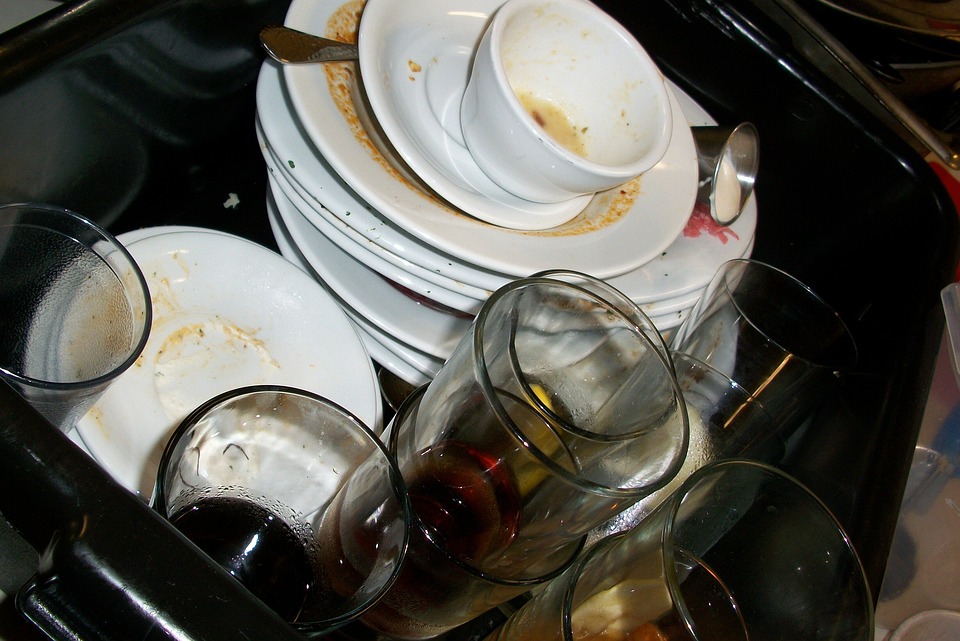Microbial contamination happens when a food has been contaminated by microorganisms, including bacteria, viruses, mould, fungi, and toxins. This can happen through various means.
DISHWASHER IN KITCHEN
When processing dishes in a dishwasher that has food trace, they become thriving grounds for flourishing of microorganisms. Kitchen environment has microorganisms present in it due to the use high microorganisms containing items example meat, plant roots and individual who work in the kitchen transmit microorganisms. It has been found that dishwashers contain bacteria that are linked to urinary tract infections, skin infections, food poisoning, and heart infections. It also uncovered that fungi thrive in many dishwashers and can cause yeast infections and thrush.
KITCHEN:
Other than the food we make in the kitchen can become a place of microbial multiplication, the raw materials used in the preparation of the food are the main sources of bringing microorganisms in the kitchen. These raw materials are either from animal source or from plant source. We really need to understand the level of microbial load in handling them in the kitchen For example meat is one of the key item responsible for causing many outbreaks of the diseases. Raw vegetable are also the source of microorganisms specially those which comes from the ground.
To avoid contamination, first thing is to contain them in such a way that they will not easily come in contact with other food item i.e. segregate these items. In their storage for example keep the cooked item on top shelve while raw in the bottom shelve. This approach should be used for both fridge and freezer. Similarly different chopping boards should be used for each item type, for example a separate for meat and different one for vegetables. They can be colour coded to easy identification.
Cooked food should not be left in open container. Open food container of processed/cooked food provides easy opportunity for multiplication for viable particle hanging in the air once they settle on the food surfaces. Airtight container are the best for a prolong shelf-life of processed food in a container.
Another source of contamination is the presence of insects and pests. Insects and pest not only carry microorganisms but also transfer undesirable microorganisms from one place to another. When insects are present; they can travel from one place to another in the kitchen. If they have the opportunity to crawl on cooked food or cleaned pots, then this can lead to microbial proliferation or can contribute to contamination of food. Control of insects and pests in the kitchen and food storage area is significant in avoiding food related illnesses.
Water is frequently used in the kitchen for the preparation of the food and cleaning of the utensils and kitchen surfaces. Kitchen should be designed in such a way that water used should not be accumulating on any surface i.e. draining completely. Other than the sanitisation of the kitchen hotspots, good sanitary conditions of the kitchen avoid multiplication of microorganisms by draining the water efficiently.
Similarly, water filters are hugely used for drinking purposes. These filters are prone for microbial proliferation and hence they must be replaced periodically or as recommended by the manufacturer or concerned health authority. The replacement of water filter every six month is desirable.
Ventilation or air movement in the kitchen is also important. If cooked food is covered with mesh like substance then air carrying microorganisms can be transferred on the surface of the cooked food.
PREFERABLE METHODS FOR THE SANITISATION KITCHEN UTENSILS:
We frequently use domestic bleach in our houses but we usually do not know its vast use. It can be used to sanitise kitchen utensils especially which comes in contact with food. A typical domestic bleach of 5.25% of Sodium Hypochlorite can be diluted to have an approximate concentration of chlorine of 200 ppm. This can be achieved by adding 15 ml of this bleach in a gallon (3.785 litres) of water. A teaspoon is usually of 5ml; approximately 4ml with the help of teaspoon can be measured and used in 1000ml bottle to achieve this concentration. It should be used in such a way that 1) equipment or articles sanitised with this solution must be allowed to drain adequately before contact with food. And 2) solution used for sanitisation equipment shall not exceed 200 ppm available chlorine. Contact time for 1 to 5 minutes is usually sufficient to achieve a thorough kill. Aforesaid sanitisation procedure should be applied after utensil has been cleaned.
Some commonly used items in the kitchen for example kitchen cloths and sponges are found heavily contaminated with harmful bacteria, meaning a proper clean-up can be difficult. Therefore their frequent replacement is highly recommended.
